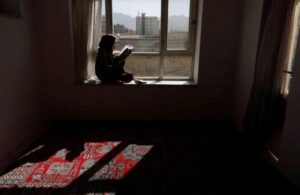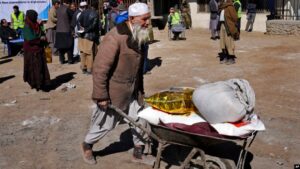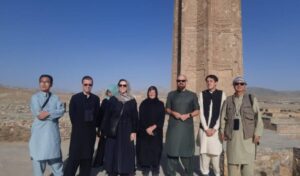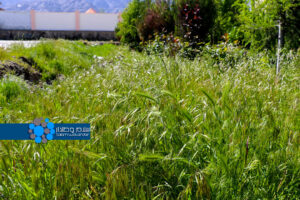KABUL (SW) – Although the extent of restrictions on the activities of female journalists and media workers is not the same in all provinces, these restrictions are more severe in remote provinces such as Faryab where female journalists have not been allowed to work normally for the past two years.
A number of female journalists in Faryab, expressing concern about the lack of opportunities and work limitations, said that in the last two years, many journalists, especially female journalists, have become unemployed in this province. They added that the lack of access to information and restrictions on the activities of female journalists have also made them face multiple problems.
Monse Hamdam, the managing director of “Hamdam Magazine”, the first special magazine for women in Faryab, which ceased to operate after the return of the Islamic Emirate, said that this magazine was launched in 2015 in order to improve the capacity of women, which mostly covers cultural, social and legal matters. According to Ms. Hamdam, during the several years of this media activity, no institution supported it and all its expenses were covered by personal money, but after the recent developments in the country and economic problems, this publication stopped. Hamdam said: “Hamdam magazine has not had any foreign or domestic supporters since the beginning because the book was a private reference and it was always printed from via personal budget.”
The relative freedom and opportunities that have been provided in Afghanistan in the last two decades led to the establishment of many media houses and women had a prominent presence in it, but after the collapse of the republic, all these opportunities disappeared and most of the female journalists were sidelined.
Mehrangiz Efat Karimi, a journalism student in Faryab who previously worked as a presenter in one of the local media houses, said that after the fall of the republic and the imposition of restrictions on journalists, she became unemployed and her dreams of serving the people were destroyed. She told Salam Watandar that the restrictions on the work of female journalists and the unemployment caused by these restrictions have made her depressed.
She said: “When the Islamic Emirate came and the obstacles that stood in the way, the main thing is that there is no motivation.”
After the establishment of the new government, female journalists have been widely removed from the media, some of them have migrated outside of Afghanistan, and some of them who have remained in the country have suffered from financial problems and mental illnesses.
2 hours ago
double suffering; Unemployment has depressed female journalists in Faryab
A determined visionary
WOMEN JOURNALIST IN AFGHANISTAN
Social media
Although the extent of restrictions on the activities of female journalists and media workers is not the same in all provinces, these restrictions are more severe in remote provinces such as Faryab, and female journalists in this province have not been allowed to work normally for the past two years.
A number of female journalists in Faryab, expressing concern about the lack of opportunities and work limitations, say that in the last two years, many journalists, especially female journalists, have become unemployed in this province. They add that the lack of access to information and restrictions on the activities of female journalists have also made them face problems.
Monse Hamdam, the managing director of “Hamdam Magazine”, the first special magazine for women in Faryab, which ceased to operate after the return of the Islamic Emirate, says that this magazine was launched in 2015 in order to improve the capacity of women, which mostly covers cultural, social, legal, information and It covered education. According to Ms. Hamdam, during the several years of this media activity, no institution supported it and all its expenses were covered by personal money; But after the recent developments in the country and economic problems, this publication stopped working. Hamdam says: “Hamdam magazine has not had any foreign or domestic supporters since the beginning; Because the book was a private reference and it was always printed from my personal budget.
Follow Salam Vatandar on Twitter
The relative freedom and opportunities that have been provided in Afghanistan in the last two decades have caused many media to be created in the country and women have a prominent presence in it; But after the collapse of the republic, all these opportunities disappeared and most of the female journalists were removed from the field of media activity.
Mehrangiz Efat Karimi, a journalism student in Faryab who previously worked as an educational and information presenter in one of the local media, says that after the fall of the republic and the imposition of restrictions on journalists, he became unemployed and his dreams of serving the people were destroyed. gone. He tells Salam Watandar that the restrictions on the work of female journalists and the unemployment caused by these restrictions have made him depressed.
Mrs. Efat Karimi says: “When the Islamic Emirate came and the obstacles that stood in the way, the first thing is that there is no motivation.”
After the new government took office, female journalists were widely removed from the media, some of them migrated outside of Afghanistan, and some of them who remained in the country suffered from financial problems and mental illnesses.
Another reporter in Faryab, Aseela Ahmadzai, said that the restrictions imposed on women in the past two years have caused her to lose her job and become depressed. According to her, female journalists have not been invited to any government meetings or meetings related to journalists in Faryab in the last two years.
Shagoufa Saadat, another female journalist in Faryab, expressing her disappointment with the current situation of female journalists, said that due to restrictions placed on women’s media activities, they cannot participate in news conferences and with female journalists in terms of access to information as male reporters also do not cooperate. “Restrictions on female journalists have increased in Faryab. We have not been allowed to attend any of the press meetings and meetings, and these concerns have multiplied the number of female journalists in Faryab.”
She asked the government and institutions that support journalists to pay attention to the work situation of female journalists in Afghanistan and not let them be excluded from media activities.
Qutbuddin Kohi, head of the National Union of Journalists in Faryab, confirming the restrictions on the activities of female journalists in Faryab, said that before the establishment of the Islamic Emirate, nearly 35 female journalists were working in Faryab, but now, only five female journalists are working in this province. He aadded that in the meetings he had with the governor and the head of information and culture of Faryab, he highlighted this issue many times, but so far no effort has been made to address this problem.
Mr. Kohi said that almost all media outlets in Faryab have been closed and journalists have become unemployed, which has caused a number of journalists to migrate from Faryab to other provinces. Concerned about the situation of female journalists in Faryab, he said: “A number of female journalists who were actually present in the workplace and working with different mmedia houses stayed at home. They were very disappointed, even suffered mental and emotional problems both because they lost their jobs and because they have no income.”
Gholam Mohammad Karimi, the head of information department in Faryab, said the efforts to remove restrictions are underway and said that these problems will be resolved soon and female journalists can continue their activities based on the principles of Sharia. He said: “The Islamic Emirate of Afghanistan wants to establish a series of policies and procedures for the safety of women and the way they work in the media.”
ENDS






